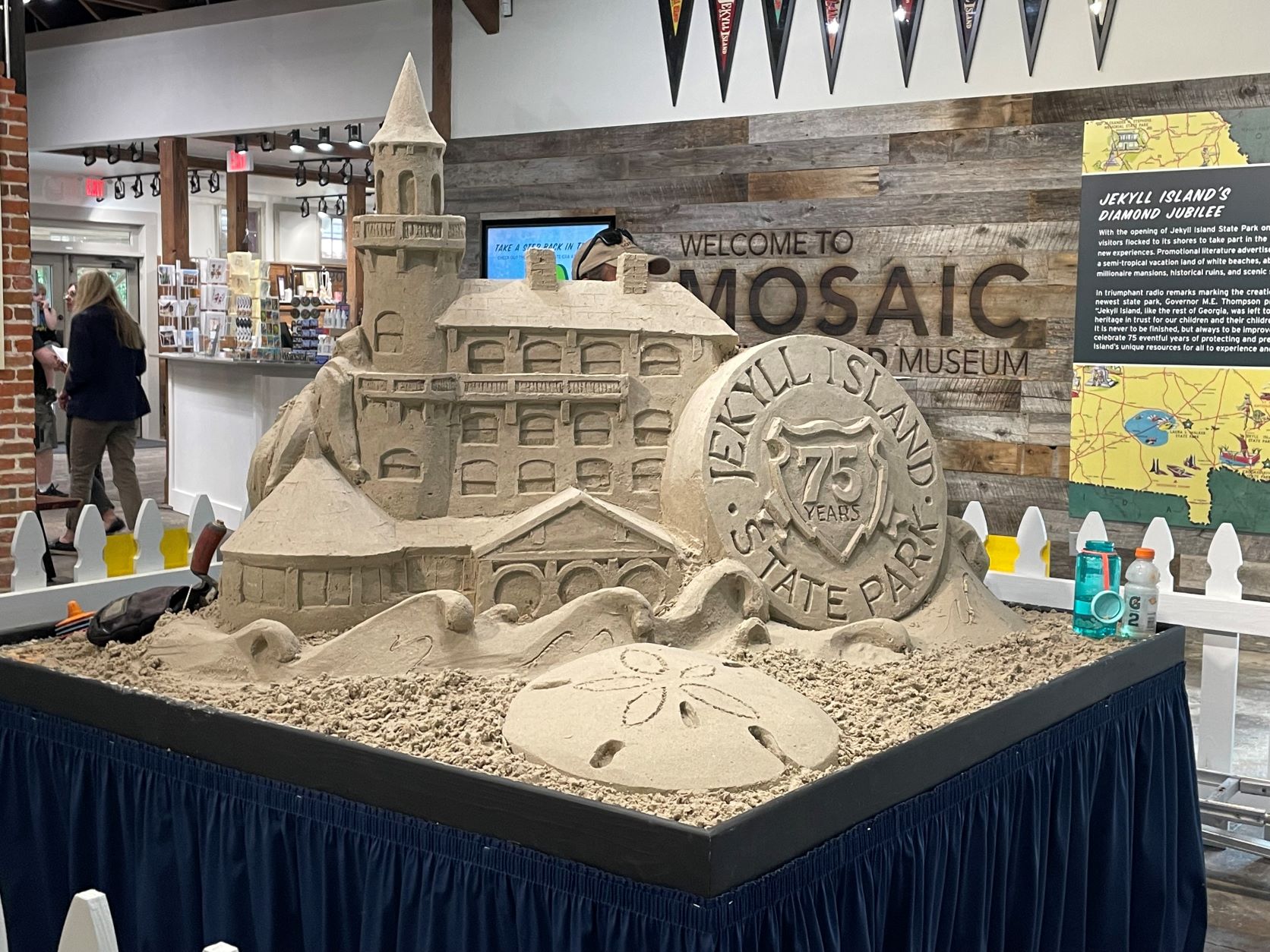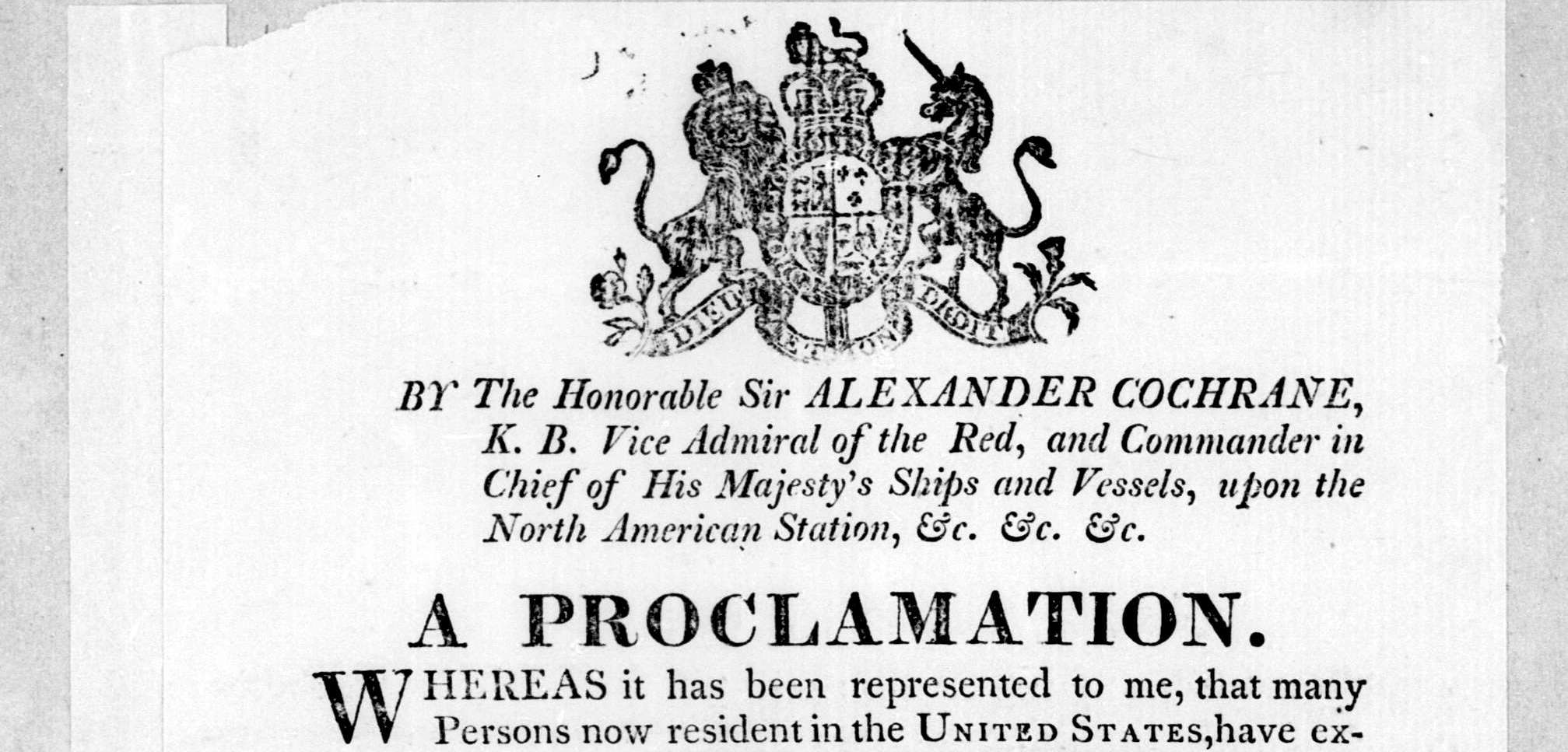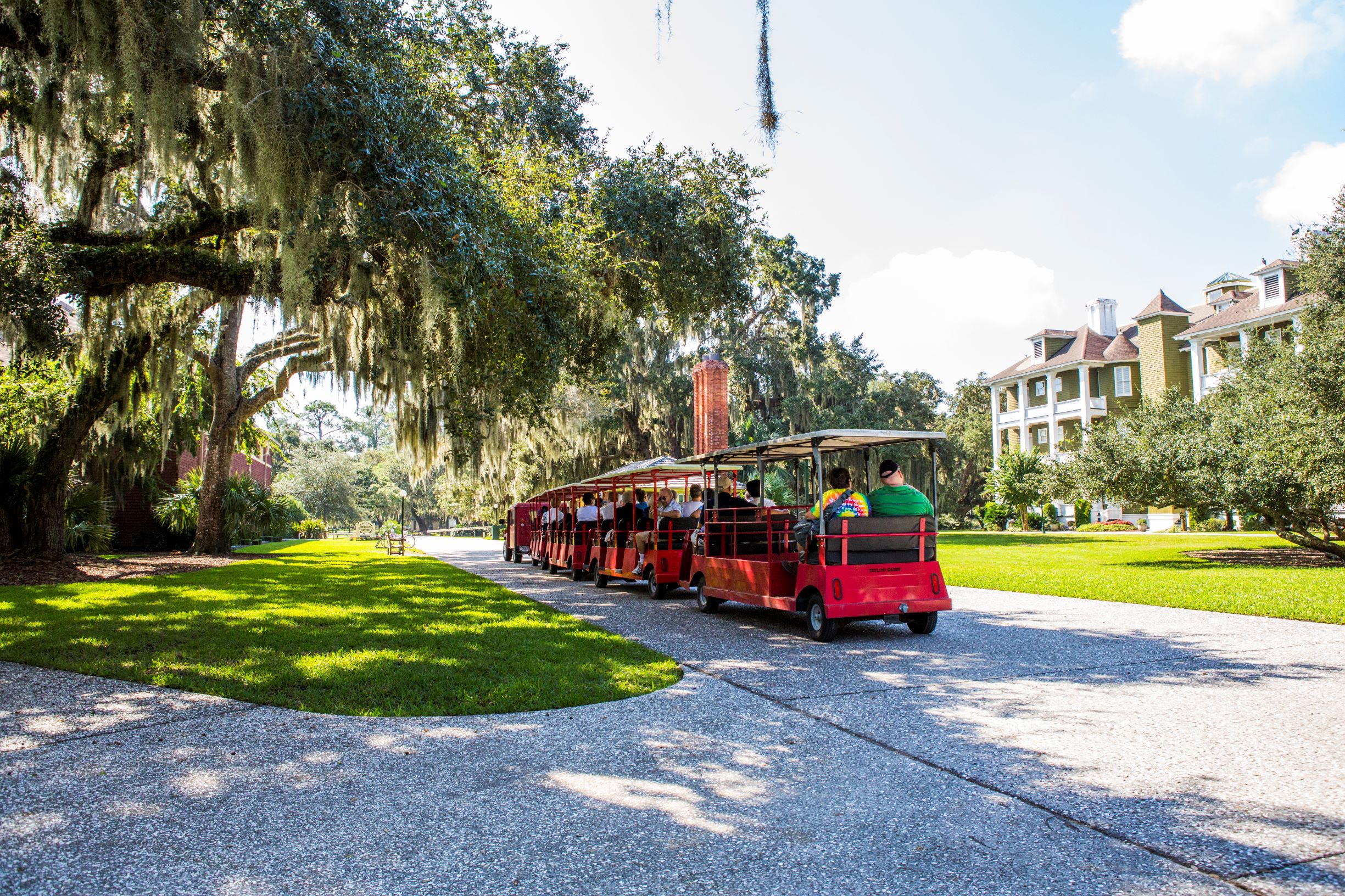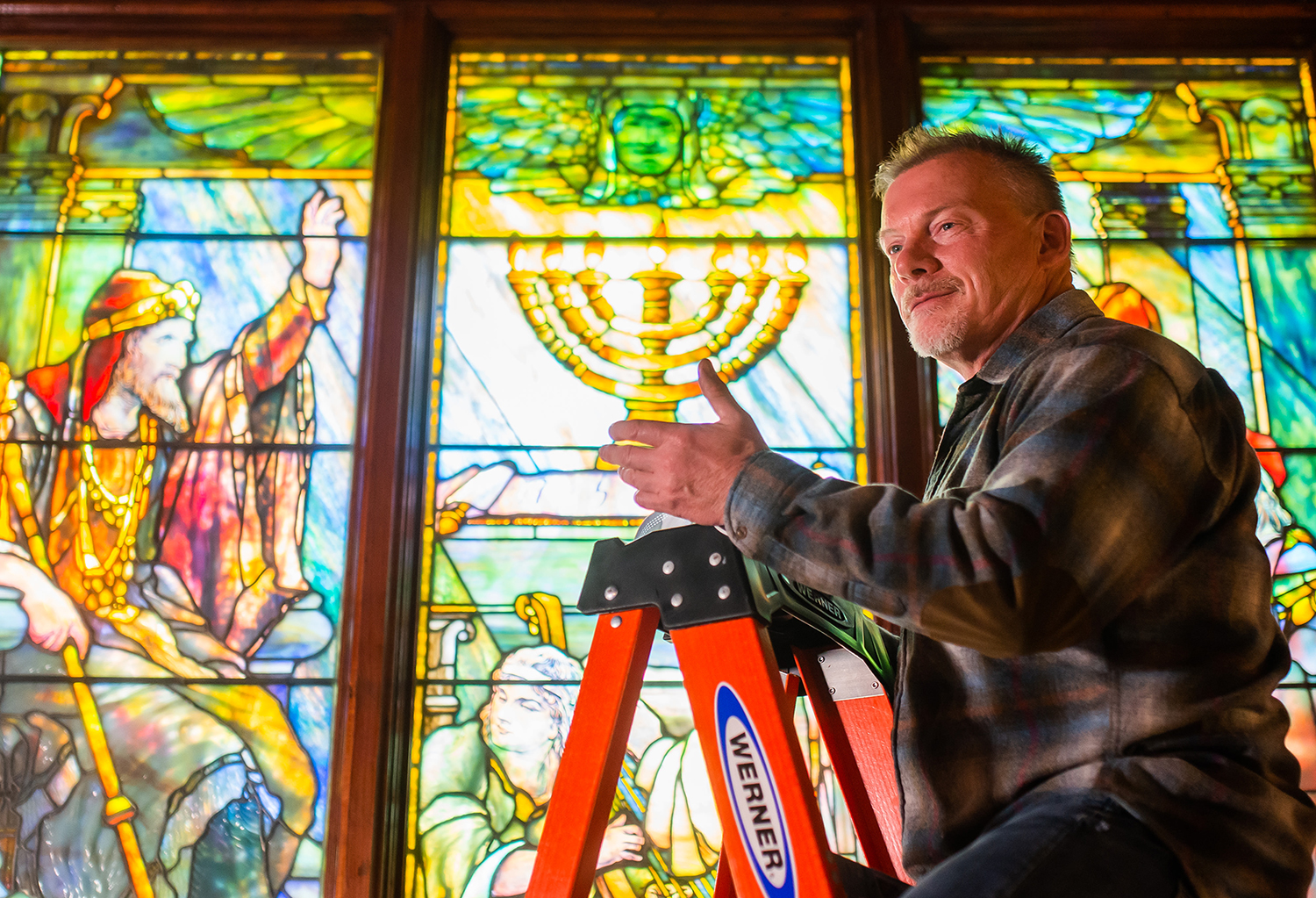by Allison Dupuis, JIA Museum Educator
This April, Mosaic, Jekyll Island Museum, celebrates its fourth anniversary. Thousands of visitors have walked through the museum’s big red doors to experience Jekyll Island’s history. And what a rich history it is! In the museum gallery, visitors can listen to accounts of Wanderer survivors or a recording of the first transcontinental phone call, spearheaded by Jekyll Island Club member and AT&T president Theodore Vail in 1915. They can virtually “try on” outfits from the Gilded Age, explore an eagle’s nest, or take a spin around the island on a Red Bug. The museum’s lobby entrance, which features rotating exhibits, is preparing for its next exhibit launch in April as well. The gift shop pays homage to the building’s historical roots—it features some of the original structure that made this building the former Jekyll Island Club stables, complete with hay loft and a single (facsimile) horse.
Mosaic has certainly grown and remained dynamic since its opening day in 2019. Visitation numbers have grown, especially since the museum reopened after temporary closures due to the pandemic. In fact, at the end of the 2022 fiscal year, Mosaic’s annual visitation exceeded 50,000 people! Visitors take part in the museum’s trolley tours of the Jekyll Island Club National Historic Landmark district, which run four times daily. They also come to the museum for special historic tours and programs, which have continued to grow over the past two calendar years. These programs have taken guests all over the island, from St. Andrews Beach for a Dolphin Club Days tour to the Horton House for Pistols and Privateers. In the near future, Mosaic will begin to host a slate of new and exciting programs. Guests can enjoy a behind-the-scenes look at Mistletoe Cottage with April’s Cottage Spotlight, or can step back in time with Jekyll Island Club visitor Jean Struthers as part of the museum’s ongoing Living History Presents program.
There are exciting physical additions at Mosaic, too! Work has recently begun in earnest on the exterior paddock,” Mosaic’s outdoor education space. The paddock will host annual and seasonal programming and events. Work on the space is expected to be completed in mid-April, and the museum looks forward to utilizing this space to its fullest potential. To learn more or give to this new addition, visit Mosaic Initiative. Make sure to keep up with all things Jekyll Island history by visiting Mosaic’s website.




